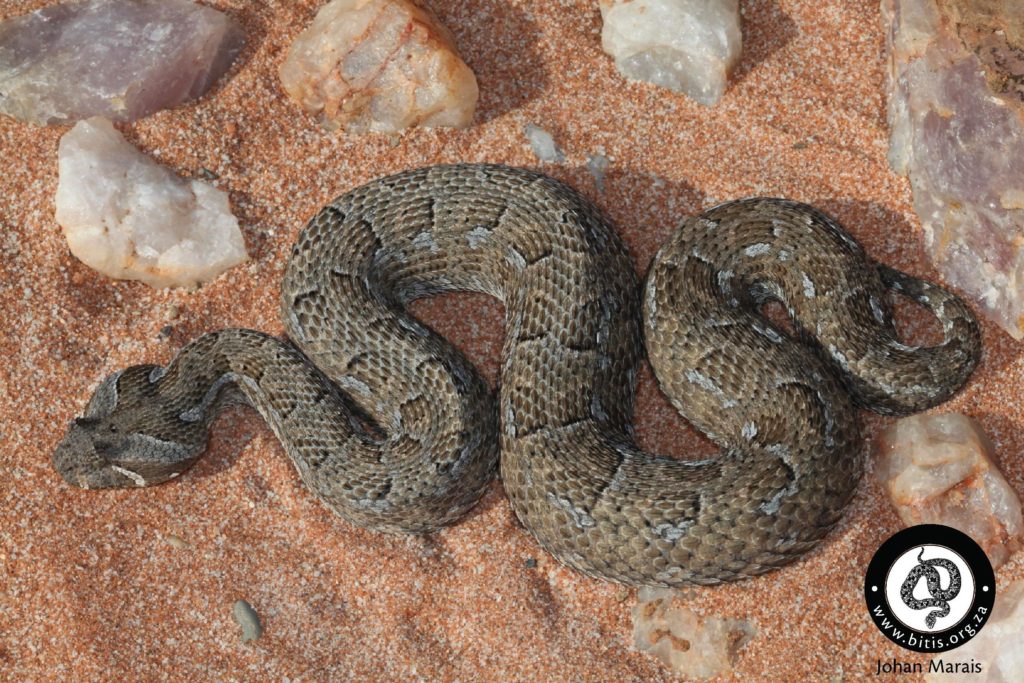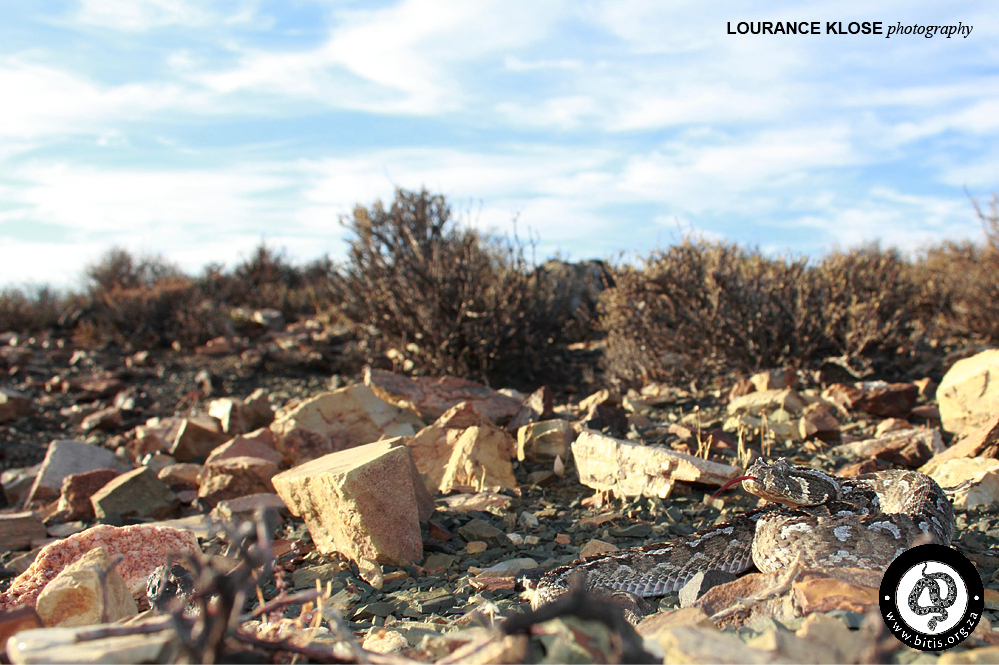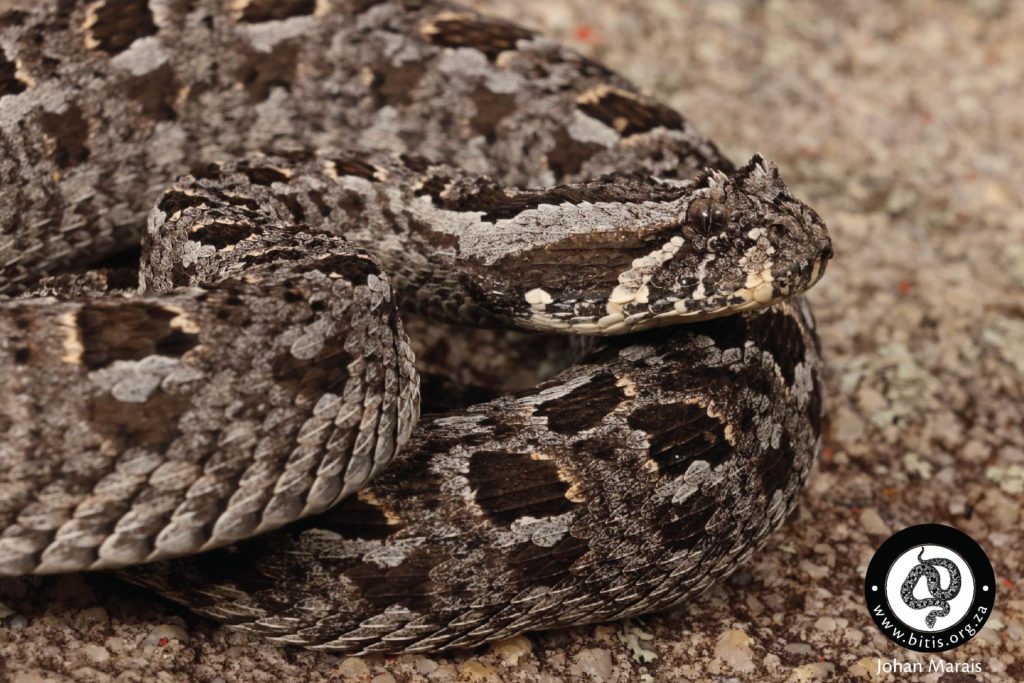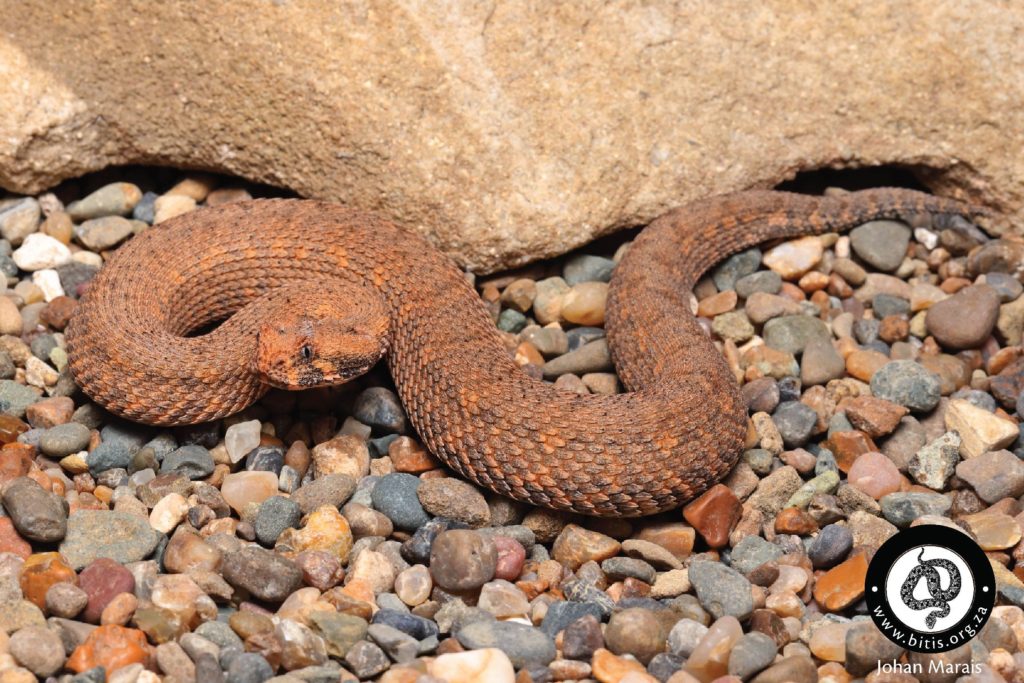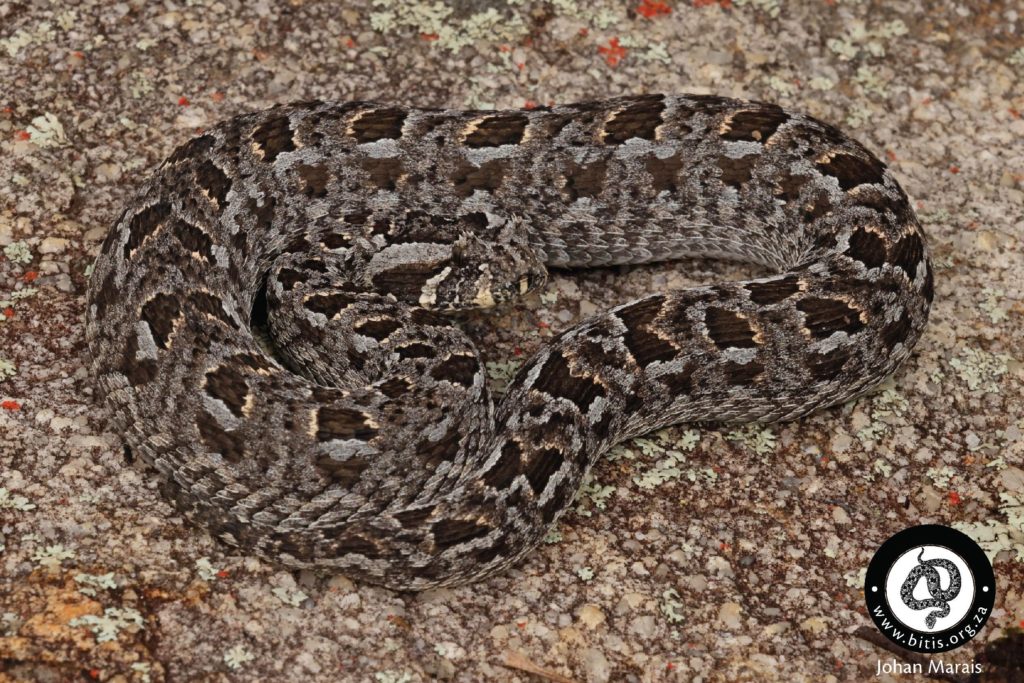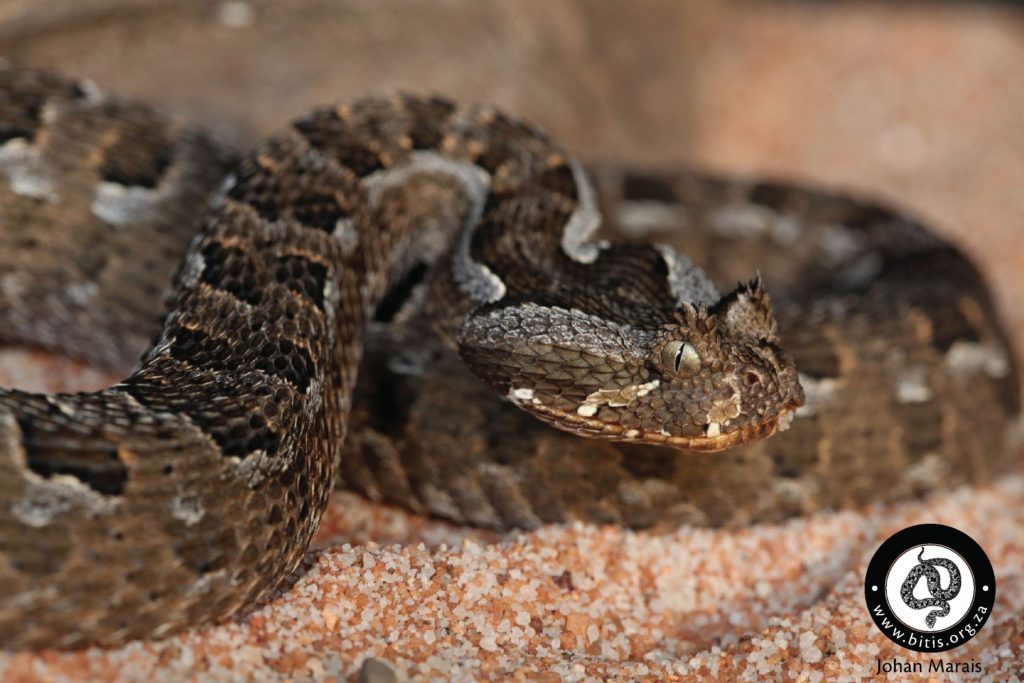Red Adder (Bitis rubida)
Holotype – PEM R12582 – Cederberg Mountains, Western Cape, South Africa.
Previous names
Bitis inornata
Bitis cornuata
Bitis cornuta albanica
Bitis rubida – Branch 1997
Etymology – “rubida” translates to red and refers to the animals from the type locality – Cederberg – which are often red in colour.
Species history – Previously Bitis rubida was confused with Bitis inornata (the red form of Bitis rubida) and Bitis cornuta (the patterned form of Bitis rubida). They were also considered a western extension of Bitis albanica by FitzSimons. Individuals from the Swartberg Mountain range were confused with Bitis armata due to their light grey colouration. Originally known from the Cederberg Mountains in the west (where both colour forms occur), this species has also been recorded from the Komsberg Mountain range and the drier northern slopes of the Cape Fold Mountains as far as the western Baviaanskloof. A photographic record of a small pink adder from the Winterhoek Mountains north of the town of Port Elizabeth requires confirmation but may be an eastern range extension for the species.
Description – A mid-sized adder known to reach 55-60cm. They are very variable, generally based on location. Animals in the karoo flats and into the Cederberg are often pain reddish-brown to orange. Some of the orange forms from the karoo flats have paired black triangles down the back, bordered with light grey stripes. Other forms may be brown to grey with dark paired triangles or rectangles with a grey to white stripe on the outer edge and often edged in yellow or orange. The sides of the body have dark blotches that may form an X pattern. There is usually a dark arrow on the head extending to the eyes. The scales above the eyes may be slightly raised or reduced. The side of the head is dark with two pale stripes below the eye.
Natural habits – This is a widespread and variable species that occurs from low Karoo flats to high altitude mountains. It can be found in dry karoo scrub on gravel plains to fynbos and dry grasslands usually with rock outcrops. It varies greatly in colour and often blends in well with the surrounding environs. It is known to bury into soft sand and ambush prey which is largely lizards and probably geckos. It may be confused with a few other dwarf adders in the cornuta-inornata complex but is generally accepted as being geographically isolated from other species in this group. It may overlap with populations of Bitis atropos on certain mountain ranges although it appears that B. rubida prefers the drier northern slopes and B.atropos prefers the cooler and moister southern slopes. It may also be found in the same vicinity as Bitis caudalis in some regions of the Karoo flats.
Venom – Nothing is known of the venom of this species as no bites have been recorded. It is expected to be similar to typical dwarf Bitis, having largely cytotoxic properties with swelling, blistering and potentially tissue damage, but may have some slight neurotoxic symptoms such as disorientation, confusion and nausea.

